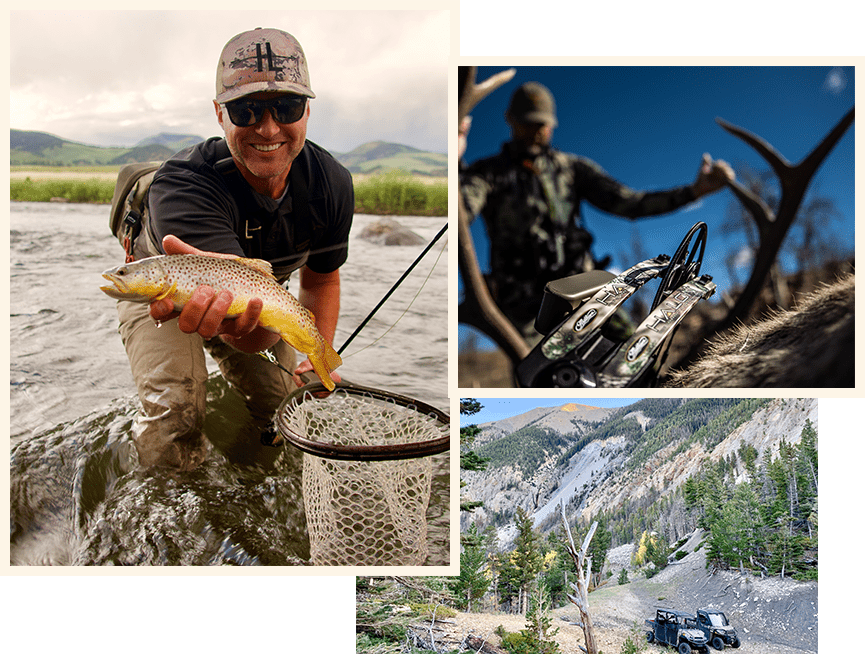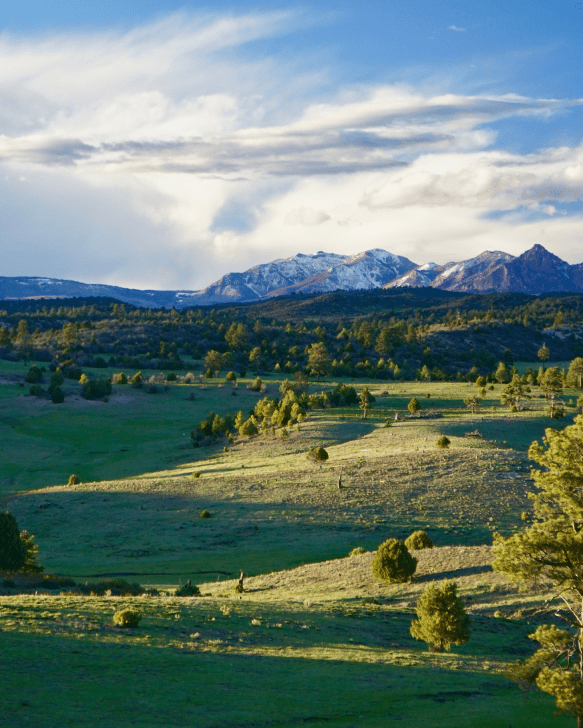It’s worthwhile to heed advice from lifelong hunters when you’re out during late hunting season. What do these experienced hunters have in their wisdom packs? Thoughtful strategies that worked for them over and over. Their suggestions may be keys for you, too, to tag a buck during late season.
Guides on hunting ranches in Colorado may point out where the deer feed and bed down. But you may not have professional help. You’re on your own. Whether you are on a private hunting ranch or public land, these tips might come to mind exactly when you need them.
Let’s go over useful tidbits for hunting during late fall.
Be Near Food Sources
Stake out a spot near easy food sources. Why? Imagine bucks during rut season. For them, it’s like a battle and takes immense exertion. Even the strongest deer can get depleted. So, often you’ll find these majestic animals simply bedding down near food sources such as corn, beans, and acorns.
Enhance the Food Sources
Just like birds, these bigger creatures will head towards easy food sources. Remember, post-rut they are weary. At times, hunters regularly put out food to help draw animals close to their hunting stands. There you are, just before sunset, waiting to bag a buck. Why make it harder than it needs to be? Pack in brassicas or wheat to spread out and shorten the wait.
If you or a friend own a hunting ranch, consider bolstering the food sources permanently. Plant delicious fields of corn, beans, or turnips.
Bedding Areas for Deer
Let’s point out two types of bedding areas the deer seek: sunny/solar and thermal. Deer take advantage of the early sun when choosing their bedding areas. In the mountains, they stay near the south-facing mountainsides and valleys. As it is getting colder, to conserve energy during the day, the deer will move away from beds that have become shady and move to sunshine or what we call solar areas.
With no helpful sunshine, deer will take shelter away from winds and rain, snow and cold. This is when we find them bedding down in thermal areas. Check the underbrush, in creek bottoms, or under pine branches.
Time of Day Makes Difference
During late-season hunts, afternoons and evenings may prove more successful. Although moving around in broad daylight comes with challenges, patience and persistence helps overcome these hurdles. As a rule of thumb, always be thinking about how you can execute a retreat if your first couple of sets didn’t work. Then try waiting for dusk when you’ll have better cover.
Hunting Early in the Day
Hunters who start early in the morning have already scoped out the scene. They found their thick cover near the food sources and know where deer will bed down. The key is selecting the best spot. In the early morning, move in extremely quietly. Try to use any wind to your advantage.
Really Late Hunts
When it’s getting very late in the season, avid hunters might go to new rutting territory. One follows the rut to warmer states—those south of Montana or Wyoming hunting ranches. Hunters on Colorado ranches may head to Texas or Mississippi, let’s say. In other words, these hunters extend their hunting season.
Overcome Lack of Cover
Late season features minimal cover – for both the deer and the hunters. The leaves have fallen from the trees making it easier for them to see one another. While the deer seek thick bedding cover, hunters often need to supplement their stands. Importantly, they must choose the right tree.
New hunters might rush to set up something near a deer camp, forgetting about the visibility problem. In contrast, an experienced hunter may take all day to scope out the deer patterns, find the right tree, and finally, cut branches to use behind the deer stand to block the light.
Benefit from Midday Cold
After the rut, bucks conserve energy. Any significantly cold dip in the weather can work to the advantage of a hunter. The cold causes the deer to move slower. During the middle warmest part of the day, the tired animals will be refueling and simply hunkering down.
Weather Helping Late Hunts
Snow or no snow, the best hunter uses the weather patterns to his advantage. When snow is on the ground, animal tracks make it easier to follow their trail to their food sources and bedding areas.
But without snow, the cold temperatures and the changing weather can also be helpful. Although light recreational hunters may cancel because of an awful weather forecast, the stalwart few tromp on through the cold and bring home a trophy. Their animal instincts outsmart the prey.
Hunting Ranches for Sale
If you decide to invest in recreational ranches or hunting ranches out West, join the lifetime hunters at Harrigan Land Company for a tour or two. Call 303-908-1101.


